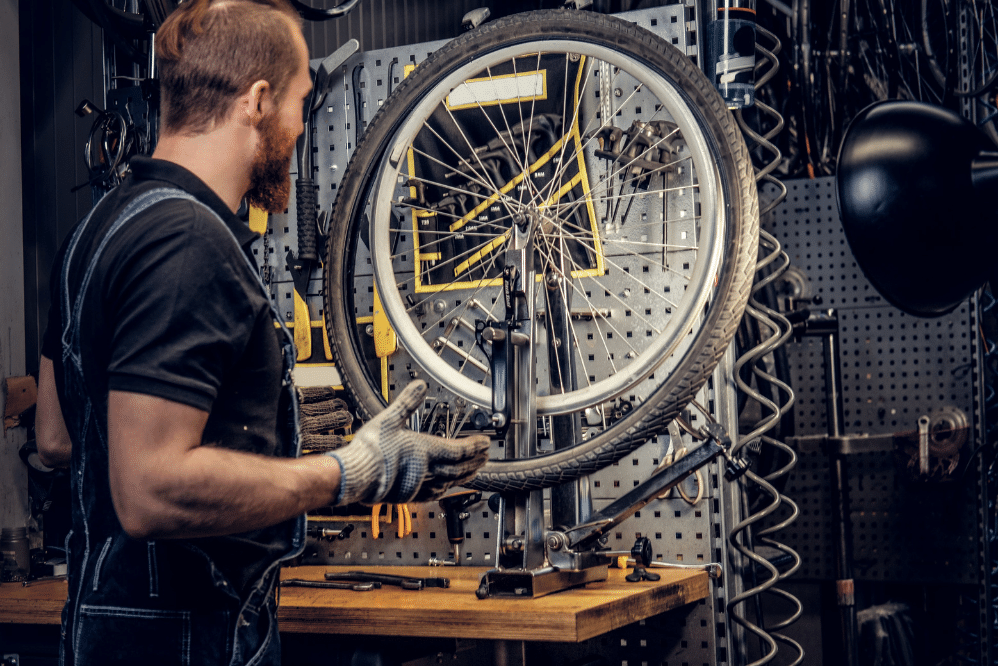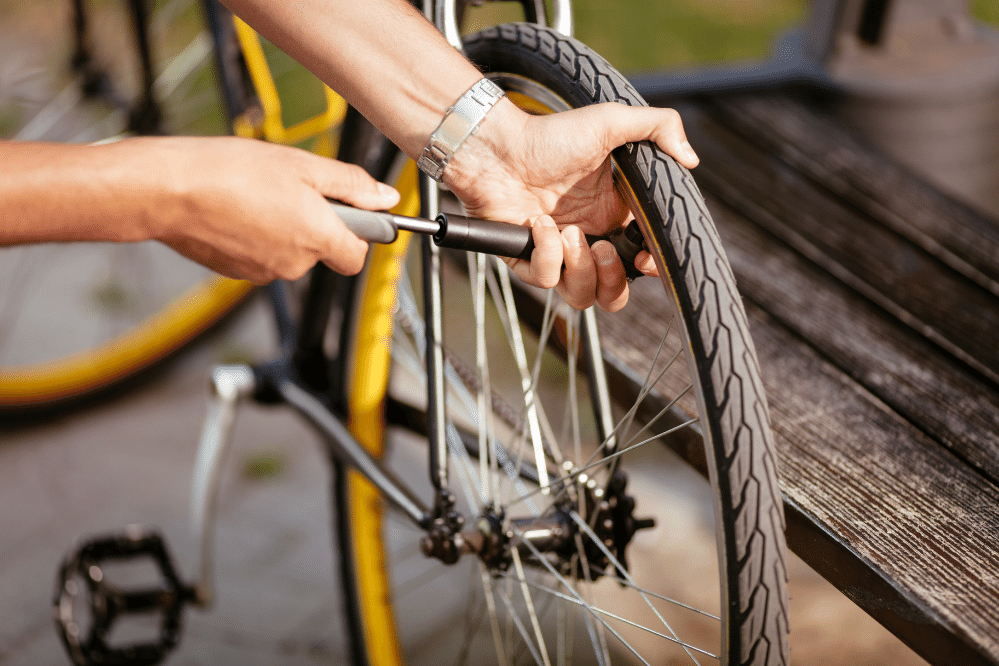After you’ve purchased the bike of your dreams, one of the most exciting things you can do is modify it. The reasons for altering your bike can vary, depending on the desired speed or aesthetics. A reasonably affordable approach to improve some aspects of its performance, such as speed or reliability, is choosing the best inner tubes for your bike. This article will teach you all about bike innertube sizes, valve types, and more.
What is an inner tube?

An inner tube is a balloon-like device usually made of butyl rubber or latex. In simpler words, the inner tube is your air cushion, and it provides a comfortable and safe ride when inflated beneath the tire.
Inner tubes can puncture; however, they’re easily replaced. They come in different sizes, so picking an inner tube can become tricky. To find the proper inner tube for your bike, you’ll need to know three things:
- The diameter of your wheel,
- The width of your tire,
- The valve type that matches your bike’s rims.
Common Inner Tube Sizes
The wheel size of a bicycle is measured in inches or centimeters, depending on the model. Road bikes and hybrid bikes often have metric wheel sizes. The most common size is 700c, which can also be written as 28 inches.
But what exactly does 700c imply? In the cycling world, it’s the most popular standard size. The value represents a rough estimate of the wheel’s diameter in millimeters, including the tire. The letter is a relic from the past that has lost its significance.
Commuter bikes tires
Commuter bike tires are generally sold in larger widths than standard road bike tires to provide added comfort and reduce the risk of punctures. Generally speaking, you’ll want a minimum width of 28c, preferably 32-35c.
Commuters prioritize durability, longevity, and puncture resistance, even if this means a slightly heavier tire. Commuter tires come in slick, semi-slick, or full tread. Slick tires maximize rolling efficiency and have minimal resistance but may sacrifice traction where road conditions are not ideal.
Mountain bikes tires
The type of tire you choose has a significant impact on how your mountain bike rides, and it can mean the difference between keeping upright on the trail and bailing catastrophically (which you want to avoid!).
Your tire selection must compliment your riding style and the trails you’ll explore. Downhill and enduro tires have larger knobs and tougher casings, whereas cross-country tires prioritize less rolling resistance. In general, the best mountain bike tires will provide you with enough traction while also combining durability, control, and speed.
What Size Inner Tube Does My Bike Need?

Inner tubes are usually labeled with a wheel diameter and width range for which they are suitable. And where can you find this label? Check the sidewalls of your tires. On a road bike, the tire should say “700x23c,” whereas, on a mountain bike, it should say “29×1.9.” The first number in this series refers to the wheel’s diameter, while the second refers to the tire’s width.
Make sure you change your inner tubes with the correct size for your tire’s diameter and width. But does inner tube have to be exact size as the tire? No, inner tubes are made out of butyl rubber which can stretch; however, it’s always best to try and find the right size.
Choose a tube that fits the diameter of your wheel
The diameter of your tire is the first number you see on the sidewalls of your tires. Diameters such as 26, 24, 20, 27.5, 29, and 700c are the most common.
The measurements for the diameter must be accurate. A 26 x 1.75 size, for example, denotes a tire diameter of 26 inches. The diameter of the tube should roughly match that of the tire, and we say roughly because tires with similar diameters may share an inner tube.
Choose a tube that fits the width of your tire
Like the diameter, the tire’s width is labeled on the sidewall of your tires. More specifically, it’s the second number. There are a variety of bike tire widths, and the inner tube needs to fit the width approximately. Why, you might ask? Because, if the inner tube is too narrow, it’ll become very thin when inflated, causing it to be fragile to punctures and failures.
If the tube is too wide, it’ll be difficult to properly fit inside the tire casing, with parts of it possibly sticking out of the tire and blowing out when the tire is fully inflated.
Which Valve Stem Is Right For Your Bike?

You need to consider some serious matchmaking when picking out the perfect valve stem for your bike’s tires. The valve stems play an essential role in maintaining the tire pressure and improving your bike’s overall performance. There are two types of valve stems, which we will further discuss.
Schrader valves
Schrader valves are very popular. They’re similar to those found in cars and are mainly used on economical bikes. From top to bottom, they usually have the same diameter. When used on wheels, the outside wall is often covered in rubber and threaded to accommodate a cap or pump head.
A spring-loaded check valve controls the airflow in and out of the pin in the middle. To allow air into your Schrader-valve tube, you must apply pressure to the inner pin.
Presta valves
Presta valves are half the width of Schrader valves and are entirely metal. Some are threaded all the way down, while others taper somewhat near the top. The valve stem can be opened by unscrewing the top knurled (textured) nut.
Their mechanism doesn’t require a check valve but instead relies only on the pressure in the tube or tire to seal. Moreover, the entire core of many Presta valves can be removed. When unscrewing the stem nut, be careful not to unscrew the whole core, immediately allowing all the air out of the tire.
Can You Ride a Bike Tubeless?

Tubeless tires, which were once only used by elite racers, are now being used by many riders. They’re currently the standard on most mid-to-high-end mountain and gravel bikes and are also becoming more popular on road bikes. However, consider the following benefits and drawbacks before deciding to go tubeless.
Pros
- Because of the sealant, you’ll have fewer flats.
- You’ll have a more pleasant ride
- You’ll have a lighter bike
Cons
- You’ll splurge more cash
- They take more time to install:
- You’ll still need to have a tube with you in case you get a flat
- The sealant might save you from getting flats, but it’ll be hell to clean if a tire gets gashed enough to splatter components and clothing.
Conclusion
While customizing your bike can be enjoyable, it can also be tricky. Finding the correct innertube size and valves or choosing whether or not to purchase tubeless tires can be daunting for some. We hope that through this article, we’ve made it easier for you to make these decisions.




